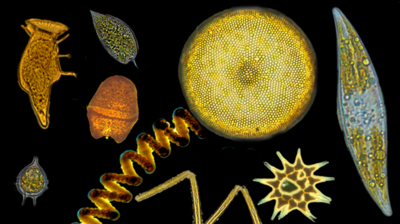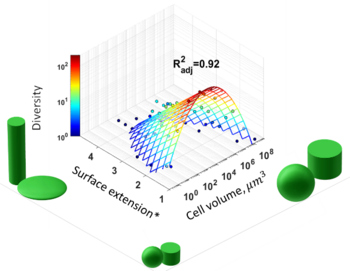Dr. Alexey Ryabov
Institut für Chemie und Biologie des Meeres (ICBM) (» Postanschrift)
Cell Shapes
Why are plankton cell shapes so diverse, and what is the role of shape in the functioning of a plankton cell or colony of cells?
Surprisingly, little is known about how the diversity of species body forms is related to taxonomic richness and ecological function. This opens up a new, unexplored perspective to marine biodiversity. Such research has the potential to improve our understanding of how accelerating changes in the marine environment may affect planktonic communities or, more fundamentally, lead to a better understanding of the evolutionary principles of life.
When we began this study, we expected to find the greatest biodiversity in elongated or flattened cells because, unlike, for example, spheres, these shapes have more potential to build complex structures. But, to our surprise, we found the greatest species diversity among cells with simple shapes, such as cubes and spheres. In particular, both small and large plankton cells were spherical. The intermediate-sized cells showed the greatest variation in shape, from flat to extremely elongated, but for them too, most species had compact cell shapes resembling spheres or cubes.
We are only at the beginning of the journey and many questions remain to be answered. In the future, we plan to investigate the influence of shape on cell function, to better understand the mechanics leading to high biodiversity of simple shapes, and to study the influence of the shape and size of phytoplankton colonies.





